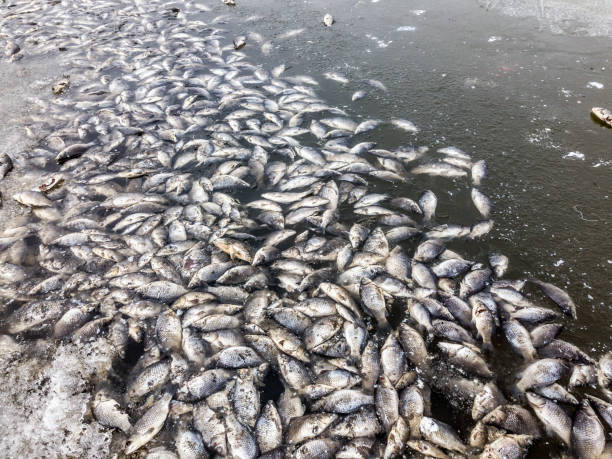
Thousands of fish at a spring in the Babapora area of Qazigund in south Kashmir’s Kulgam district have died after the water body developed a low concentration of oxygen. In a never-before incident, the dead fish were flushed towards the mouth of the spring.
Spring is the natural exit point at which groundwater emerges out of the aquifer and flows onto the top of the Earth’s crust to become surface water. It is a component of the hydrosphere as well as a part of the water cycle.
Officials told the news agency—Kashmir News Observer (KNO) that a spring located at Babapora with good discharge for the past many years was selected as a source for this water supply scheme for villages – Babaporateng, Mandhole and Chandian Pajan.
They said there was a reduction in the discharge of the spring in such a way that almost all the fish (in quintals) which were initially inside the spring under the hillock came out towards the mouth of the spring, which has never happened before. This created panic for us as well as the local people, they said.
“The fisheries department had shifted fish visible near the spring, into a nearby nallah. Also, the Jal Shakti department had disconnected the water supply to the area and a tanker service had then begun,” the officials said.
They said the spot was flushed with water jets by using fire tenders from the fire and emergency departments which helped to flush out the dead fish which are in and make the water fit for drinking.
An expert from the Fisheries Department told KNO that the test of the water samples from the source is conducted on a daily basis which still shows the presence of bacterial and organic matter. “One sample was also sent to the central lab Srinagar,” he said, adding that the fish which are 4 to 5 quintals died “probably due to low concentration of the oxygen inside the water body”.
Mushtaq Ahmad Shah, a local, said the spring dried up a month ago and as the water level increased, the spring began flushing the dead fish. “We are witnessing a natural calamity,” he said, adding that the government should start widening the spring and develop it as an ‘Amrit Sarovar’. “The fencing around the spring will leave it unaffected by human interference,” he added.
Zulfikar Ali Malik, Executive Engineer Jal Shakti department Division (Qazigund) told KNO, “Till the water is not made contamination-free, we can’t use it for human consumption. We are expecting the quality of water will get improved soon and other fish inside the spring be preserved.”
Talking to KNO, Deputy Commissioner (DC) Kulgam Dr. Bilal Mohi-Ud-Din Bhat said the expert committee has been framed to study the occurrence in detail. “The committee will submit its report in the stipulated timeframe,” he said, adding, “We are closely monitoring the situation and all measures are in place.”
The DC said the Jal Shakti and Fisheries departments were also instructed to keep a close vision on the spring and submit a daily report to the district administration—(KNO)
